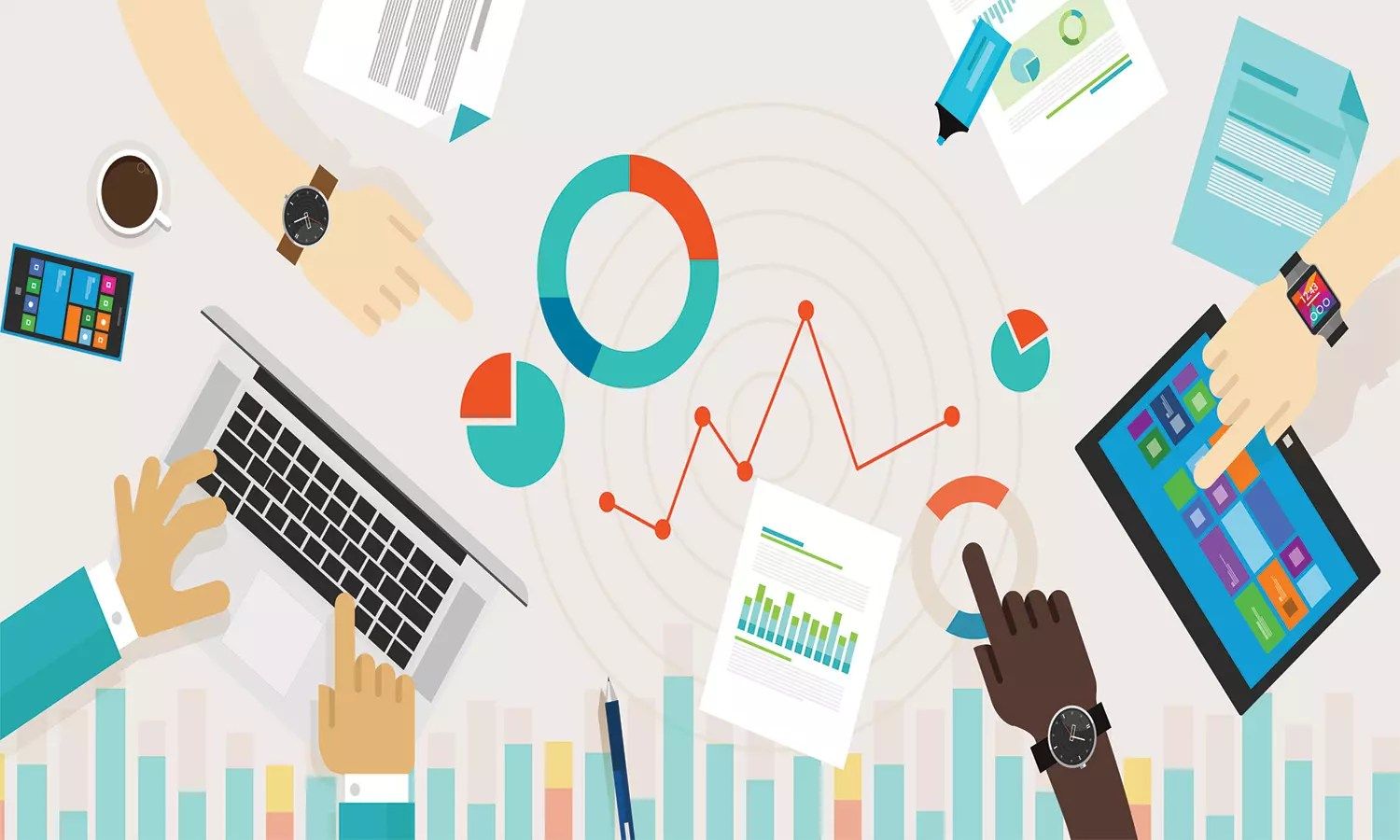How Big Data Will Drive Collaboration and Empowerment

Organisations need to apply big data analytics to make sense of their organisation. The impact of big data analytics on your organisation depends on the type of business analytics used. There are four types of analytics, ranging from descriptive and diagnostic analytics to more advanced predictive and prescriptive analytics. These are different stages of understanding your business. The more advanced analytics applied, the more complex it will be to develop. It will also result in more value being created for your organisation.
Organisations applying business analytics can better understand their environment and detect upcoming changes. It will improve the ability to make the right decisions at the right moment and as such seize the right opportunities to create competitive advantage. Structured data sources are key to achieve insights into what has happened. It is commonly referred to as business intelligence.
Descriptive and Diagnostic Analytics
Business intelligence is like looking into the rear-view mirror of your car. Using multiple structured data sources and statistical methods you can obtain insights about what has happened. Descriptive analytics is also known as business intelligence and it only offers insights into the past. It does not offer recommendations on how to move forward. A well-known example is Google Analytics that many organisations use to analyse their web traffic. It provides clear graphs to help you understand what happened to your website but does not provide recommendations on how to change your website to generate more traffic. Diagnostic analytics is about why did something happen, and it goes one step further than standard business intelligence. It is about asking the right questions to understand why something happened in the past, what the patterns and trends in the data are and what the insights are that you can derive from it.
Predictive Analytics
Predictive analytics, on the other hand, is all about the future and predicting what will happen. It uses machine learning and algorithms to find patterns and capture relationships in multiple unstructured and structured data sources to create foresight. Predictive analytics allows you to make future projections based on historical and present data. There are many different providers who offer predictive analytics solutions, including KNIME, Sisense, GoodData, Dataiku or TIBCO Spotfire. Predictive analytics enables you to use the known raw data and process it so that you can make predictions on the information you do not know. As such, predictive analytics contributes to improving decision-making processes across the organisation. It is about the future and predicting what will happen. It is like your car’s navigation system, directing you to the fastest route around a traffic jam.
The assumption is that organisations that use predictive analytics will gain a competitive advantage since they can anticipate the future. However, insufficient data and flaws or biases in algorithms and data could significantly harm organisations and their customers, which is why data governance is so important.
Prescriptive Analytics
The final stage in understanding your business is prescriptive analytics. It is about what to do (now) and why to do it, given a complex set of requirements, objectives and constraints. Prescriptive analytics not only offers recommendations on how to act upon predictions to take advantage of those predictions and transform an organisation accordingly, but it can also make decisions autonomously based on those recommendations. It leverages predictive analytics and descriptive analytics to derive ideal outcomes or solutions. Prescriptive analytics helps you solve business problems based on foresight achieved from continuously analysing a wide variety of (un)structured data sources.
Prescriptive analytics not only allows you to make sense of raw data but also allows you to determine the actions to take now. It leverages machine learning, simulations, mathematical formulae as well as optimisation and data modelling techniques to help enterprise leaders make better-informed, data-driven decisions. It is the final stage in understanding your business and offers you a thorough understanding of the environment to improve business performance. When given several options to choose from, prescriptive analytics is helpful in identifying the best outcome or solution based on known limitations and scenarios.
It is about scenario planning to determine the best option for (autonomous) decision-makers, which can reduce the amount of uncertainty. It takes predictive analytics a step further by not only helping you to decide what business decision to make, but even to make that decision on behalf of you, often autonomously. In continuation of the car metaphor: it is a self-driving, autonomous vehicle that can pick you up and take you to your destination.
Change in Power Balance
Traditionally, those managers and leaders within the organisation that have the most experience and have access to the right information make the decisions. Important information is provided solely to those decision-makers. As such, they are more knowledgeable than the rest of the organisation. However, the application of big data analytics changes this. Once a data-driven, information-centric culture has been implemented, data and insights from data become widely accessible, in real-time, across the organisation. This changes the power balance within your organisations.
Organisations that make data and insights from data widely available, experience a shift in the power structure within the business; decision-making power moves from those leaders with the most experience to anyone who has access to data and analytic tools to derive insights from it. As such, in a data-driven business, the real decision-makers within an organisation are not senior managers or C-level executives but are those employees that face the customer or who are directly involved in creating the product or service. Some leaders might be reluctant to accept this shift in power. However, only when all leaders accept the power shift, can the organisation truly benefit from big data analytics.
Collaborative Network Organisations
In the rapidly changing environments that organisations operate today, offering the right employees the right data to make decisions has become a pre-requisite. Such decentralised decision-makers will use the available insights and combine it with local knowledge, creativity and contacts to best serve the customer. As long as there is a shared vision across the business and an atmosphere of transparency, those empowered employees are more likely to collaborate with other stakeholders, including customers and even competitors, to create the best outcome. Organisations that encourage empowerment and collaboration are less prone to be surprised by changes in their environment and more likely to remain competitive.
Those organisations that could benefit the most of such empowerment and collaboration are network organisations. These are organisations that consist of multiple, geographically dispersed business units where decision-makers coordinate, collaborate and control internal and external relationships using insights from big data. The advantage network organisations have over more traditional organisations, is that they have antennas across time and space to better understand how their environment is changing and they have empowered employees to act upon it if needed.
Collaborative and empowered employees are increasingly becoming important for organisations. A collaborative culture enables employees to share insights and best practices across the organisation and use insights from big data to make the best decision at the right moment. Such collaborate network organisations will have a competitive advantage over more traditional, top-down and controlled, organisations.
Conclusion
The use of big data analytics within a business changes the power balance within that organisation. Empowered employees are more likely to collaborate with different stakeholders to create the best result for the business. They feel more involved and more responsible for the success of the organisation. As such, those organisations that want to remain competitive in a constantly changing an increasingly data-driven world should foster employee collaboration and promote the usage of (advanced) analytics across the business. Especially network organisations are in the right position to do so.
Image: Bakhtiar Zein/Shutterstock





